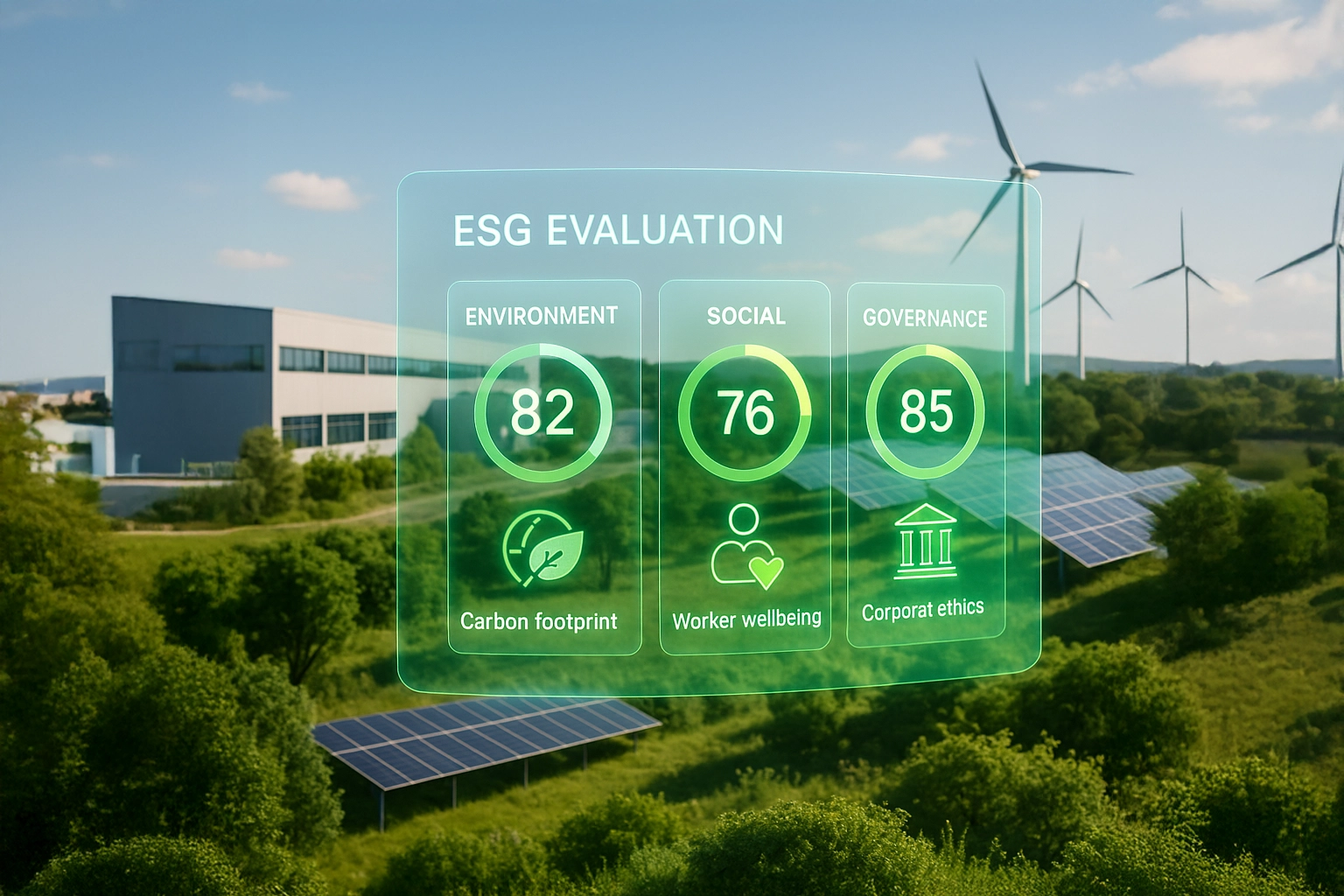Supply Chain and Cyber Risks: How to Protect Your Supply Chain?

The digital transformation of supply chains creates new opportunities but also exposes organizations to growing vulnerabilities. In 2025, third-party compliance assessment and management becomes a major strategic issue as 45% of global organizations will have suffered supply chain attacks, three times more than in 2021.
Given this shift, third-party governance has become a top priority, especially in critical sectors such as construction, industry, and retail. The impacts can be significant: in 2024, 62% of companies were affected by ransomware via their suppliers, highlighting the urgency of adopting a collaborative approach to operational resilience.
In this context, organizations must rethink their third-party assessment strategy. Beyond regulatory compliance, it is now essential to establish collaborative governance capable of anticipating and managing emerging risks, with an estimated global cost of $60 billion by the end of 2025.
Cyber Risk Identification Methodology
To ensure effective collaborative assessment, the first step is to precisely map data flows and interactions with third-party partners. This structured methodology helps identify potential vulnerabilities before they are exploited.
Analyze Data Flows
TPGRC management starts with a deep analysis of information flows. This detailed mapping identifies sensitive transmission points and clearly defines responsibilities for security. In the industrial sector, this step is especially critical for ICPE sites (Installations Classified for Environmental Protection), where full traceability of data exchanges is a regulatory requirement.
The analysis should include three essential dimensions:
- Document workflows between systems
- Points of interaction with third parties
- Storage and processing areas for sensitive data
Assess Partners’ Security Measures
The operational resilience of a third-party partner is evaluated through several objective criteria. In 2025, certification standards such as ISO 27001/27701 are prerequisites, especially in the public sector where public contract compliance requires it.
The evaluation is based on three core pillars:
- Maturity of document management processes
- Ability to detect and report anomalies
- Integration of regulatory compliance controls
This identification methodology provides a strong foundation for collaborative risk management. In retail, it is particularly relevant for analyzing international logistics flows where increasing interactions demand heightened vigilance.
Supplier Evaluation
TPGRC (Third Party Governance & Risk Control) collaborative management requires a structured methodology to ensure supply chain resilience. The evaluation relies on objective, measurable criteria to establish a trust level aligned with the stakes.
Strict Selection Criteria
The selection of third-party partners is based on three core pillars:
| Criteria | Requirement | Validation |
|---|---|---|
| Certifications | ISO 27001/27701 | Documentation |
| Cyber maturity | Dedicated team | Evaluation |
| Compliance | GDPR/NIS2 | Attestation |
In the public sector, these criteria are especially critical for public contract compliance and sensitive data protection of local authorities.
Collaborative Assessment
The evaluation focuses on several areas:
- Robustness of security infrastructure
- Data protection protocols
- Incident management procedures
- Business continuity plans
For the construction sector, this means continuous validation of required certifications and qualifications specific to critical sites.
Regular Audits
Audit frequency should match the risk profile. An annual audit is the minimum, but sensitive sectors require quarterly checks. This frequency allows:
- Early identification of vulnerabilities
- Adaptation to regulatory changes
- Continuous process optimization
Risk Management
Third-party governance requires a dynamic strategy to maintain supply chain resilience. In 2024, over 62% of companies suffered attacks through their suppliers, highlighting the need for proactive risk management.
Continuous Monitoring
Implementing a real-time monitoring system helps anticipate and respond effectively to emerging threats. In retail, this vigilance is crucial for international marketplaces where numerous third-party vendors require predictive analysis of logistical and health risks.
This monitoring revolves around three key areas:
- Observing data flows between partners
- Analyzing system behaviors
- Detecting operational anomalies
Business Continuity and Recovery Plans
Creating operational resilience plans is a key component of the TPGRC system.
For ICPE sites, this involves:
- Recovery Time Objectives (RTO) adapted to industrial processes
- Recovery Point Objectives (RPO) aligned with REACH requirements
- Secure communication protocols with critical subcontractors
NIS 2 Compliance
The NIS 2 directive requires organizations to strengthen their TPGRC management to ensure supply chain resilience. This regulation, effective in October 2024, demands a major shift in third-party evaluation practices.
Adopt Best Practices
Compliance requires implementing essential measures for operational resilience. In the public sector, this approach includes:
| Domain | Requirement | Validation |
|---|---|---|
| Governance | Role documentation | Quarterly review |
| Evaluation | Third-party risk analysis | Continuous monitoring |
| Incident | Response procedures | Validated action plan |
For local authorities, this methodology strengthens public contract compliance and ensures continuous evaluation of critical suppliers.
Collaborate with Authorities
The regulatory framework imposes strict notification obligations in case of an incident:
- Initial alert within 24 hours
- Interim report within 72 hours
- Complete report within 30 days
In construction, these requirements translate into:
- Ongoing validation of mandatory certifications
- Monitoring of qualifications specific to critical sites
- Documented evaluation of multi-level subcontractors
Non-compliance can lead to substantial penalties, with fines of up to 2% of global revenue. Beyond penalties, active collaboration with authorities helps anticipate regulatory changes and strengthen the supply chain’s collective resilience.
Conclusion
The TPGRC system has become a strategic pillar for European organizations. As threats intensify and regulatory frameworks tighten, a collaborative approach is essential to build resilient supply chains.
Three key success factors emerge for effective collaborative assessment:
- Automating assessments through smart document workflows
- Real-time, multi-source monitoring of third-party partners
- Proactive integration of regulatory developments
In the industrial sector, ICPE sites illustrate this shift by adopting continuous monitoring solutions for their critical partners. Integrating REACH requirements and quality processes ensures global supply chain compliance.
Modern retail exemplifies this transformation: international marketplaces now incorporate predictive analytics to anticipate and manage emerging risks in their logistics ecosystems. This approach ensures product compliance and adherence to health standards.
This operational resilience not only meets current regulatory requirements but also anticipates future developments while optimizing the administrative burden for all stakeholders.
These articles might interest you
-
 14 July 2024Duty of vigilance: A recent international report warns of companies’ non-compliance, particularly in FranceSolutionsThe World Benchmarking Alliancehas just published a report analyzing the practices of the 2,000 most important companies on the planet in terms of human rights due diligence. The “alarming” results show companies’ delay in this area, and French companies are far from being an exception to the rule. The countdown has begun before the European […]
14 July 2024Duty of vigilance: A recent international report warns of companies’ non-compliance, particularly in FranceSolutionsThe World Benchmarking Alliancehas just published a report analyzing the practices of the 2,000 most important companies on the planet in terms of human rights due diligence. The “alarming” results show companies’ delay in this area, and French companies are far from being an exception to the rule. The countdown has begun before the European […]Read more
-
 04 April 2025Understanding Key Financial Indicators for Evaluating Your Third-Party PartnersSolutionsIn an economic environment where over 60% of European companies have faced operational incidents linked to their third-party partners, as highlighted by the European Central Bank in its Annual Report on Supervisory Activities, understanding and mastering key financial indicators has become essential for evaluating the stability of your business partners. These third-party assessment tools help […]
04 April 2025Understanding Key Financial Indicators for Evaluating Your Third-Party PartnersSolutionsIn an economic environment where over 60% of European companies have faced operational incidents linked to their third-party partners, as highlighted by the European Central Bank in its Annual Report on Supervisory Activities, understanding and mastering key financial indicators has become essential for evaluating the stability of your business partners. These third-party assessment tools help […]Read more
-
 03 February 2025TPRM vs Traditional Risk Management: A Critical Comparison for Modern BusinessesSolutionsIn a market valued at $8.3 billion in 2024 and projected to reach $18.7 billion by 2030, third-party governance is becoming a strategic pillar for organizations. In response to the rapidly evolving business world, Third Party Risk Management (TPRM) is profoundly transforming traditional risk management practices. The traditional approach, focused on internal processes, is no longer sufficient […]
03 February 2025TPRM vs Traditional Risk Management: A Critical Comparison for Modern BusinessesSolutionsIn a market valued at $8.3 billion in 2024 and projected to reach $18.7 billion by 2030, third-party governance is becoming a strategic pillar for organizations. In response to the rapidly evolving business world, Third Party Risk Management (TPRM) is profoundly transforming traditional risk management practices. The traditional approach, focused on internal processes, is no longer sufficient […]Read more
-
 14 March 2025Integrating ESG Criteria into Supplier EvaluationSolutionsIntegrating environmental, social, and governance (ESG) criteria into the evaluation of third-party partners has become essential for companies seeking to strengthen their operational resilience and promote sustainable development. These criteria make it possible to analyze not only economic performance but also the environmental and social impact of business relationships. According to a recent McKinsey study, […]
14 March 2025Integrating ESG Criteria into Supplier EvaluationSolutionsIntegrating environmental, social, and governance (ESG) criteria into the evaluation of third-party partners has become essential for companies seeking to strengthen their operational resilience and promote sustainable development. These criteria make it possible to analyze not only economic performance but also the environmental and social impact of business relationships. According to a recent McKinsey study, […]Read more
